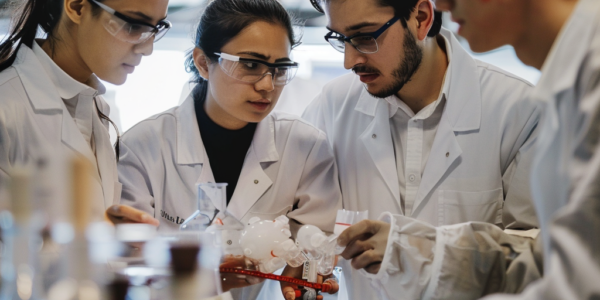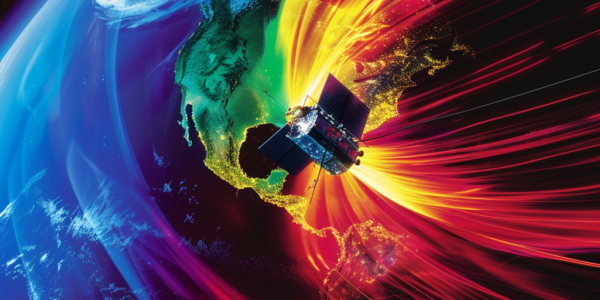Indian Forests Facing Silent Crisis Due to Climate Change
Indian forests are losing their ability to absorb CO2 due to climate change, posing a threat to India’s climate goals. Research shows an increase in green cover but a decrease in CO2 absorption, emphasizing the urgent need to address the impact of climate change on forests.
The Truth About Greenhouses
The Greenhouse Effect Isn’t for Greenhouses. Greenhouses don’t actually work based on the greenhouse effect. Instead, they create a controlled environment conducive to plant growth by controlling convection. This article explores the science behind greenhouses and the misconceptions surrounding the greenhouse effect.
Peatland Soils Rapidly Altered by Climate Change and Elevated Carbon Dioxide Levels, Study Finds
A recent study has found that peatland soils, crucial for storing carbon, are being rapidly altered by a warmer climate and elevated carbon dioxide levels. The research conducted in northern Minnesota revealed that warmer conditions and increased carbon dioxide led to a rapid breakdown of organic soil components, challenging the traditional belief that complex components of plant-derived soil organic matter would degrade more slowly than simpler components in response to climate change. These findings highlight the vulnerability of peatlands to climate change and the potential impact on carbon storage and greenhouse gas production.
Researchers Propose New Method for Tracking Origins of CO2 Emissions from Streams, Rivers, and Lakes
University of Massachusetts Amherst researchers propose a new method for tracking CO2 emissions from streams, rivers, and lakes, addressing the challenge of accurately measuring and understanding the carbon dioxide released by inland waters. The study, published in Global Biogeochemical Cycles, reveals the impact of carbonate buffering on CO2 emissions, shedding light on the cryptic nature of its production and the difficulty in accounting for it in current climate models.
UCLA and Equatic to Build World’s Largest Ocean-Based Carbon Removal Plant in Singapore
UCLA and Equatic are collaborating to build the world’s largest ocean-based carbon removal plant in Singapore, with the aim of removing 3,650 metric tons of carbon dioxide annually and producing 105 metric tons of carbon-negative hydrogen. The $20 million project is made possible through the support of Singapore’s national water agency PUB, the National Research Foundation (NRF), Singapore, and UCLA’s Institute for Carbon Management (ICM). The groundbreaking technology not only facilitates the removal and durable storage of greenhouse gases but also produces nearly 300 kilograms of carbon-negative hydrogen daily.
Scientists Investigate Drying out the Stratosphere to Reduce Warming
Scientists are exploring the feasibility of removing water vapor from the stratosphere as a means of reducing global warming. While this approach could have a cooling effect, it would not be enough to counteract the significant warming from carbon dioxide emissions. The study outlines technical barriers and the need for more measurements to better understand the distribution of water in the atmosphere.
Impact of Human-Induced Emissions on US Rainfall Patterns
A recent study by the Department of Energy’s Lawrence Berkeley National Laboratory reveals the complex interplay between human-induced greenhouse gas and aerosol emissions on rainfall patterns in the United States. While greenhouse gas emissions contribute to increased rainfall, aerosols have a long-term drying effect, with short-term impacts that vary with the seasons. The research emphasizes the significant role of aerosols in offsetting the expected rise in extreme rainfall and offers valuable insights into the intricate relationship between human-induced emissions and rainfall patterns.
ESA Approves New Scout Satellites NanoMagSat and Tango
ESA has approved two new Scout satellites, NanoMagSat and Tango, to measure Earth’s magnetic field and greenhouse-gas emissions, respectively. These missions are part of ESA’s embrace of the New Space era and are designed to deliver value-added science through the miniaturization of existing space technologies or the demonstration of new observing techniques.
New Tech Turns CO2 into Chemicals with 93% Efficiency, Runs Record 5000 Hrs
New tech developed at Huazhong University of Science and Technology in China has achieved a 93% efficiency in turning CO2 into chemicals, running for a record 5000 hours. This breakthrough could revolutionize industrial-scale projects aimed at reducing carbon dioxide in the atmosphere.
Dangerous Climate Tipping Points Will Affect Australia
Learn about the potential impacts of global climate tipping points on Australia and the irreversible changes that could occur. Cutting fossil greenhouse gas emissions is crucial to limit warming and reduce the risk of triggering tipping points.










